Tū mata mua, ora mata muri: Honouring our Kāi Tahu past, building our Kāi Tahu future
Feb 12, 2025

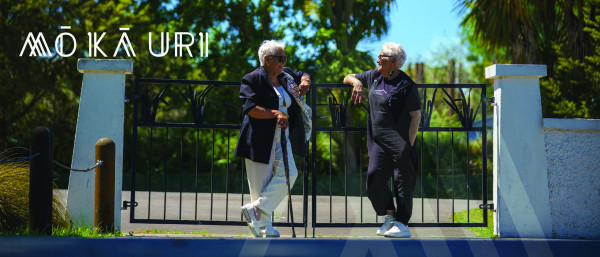
As we approach the end of the Ngāi Tahu 2025 journey, our first post-settlement tribal vision, the time is right to acknowledge our past, and all those who have contributed along the way, and to create a new collective vision. Mō Kā Uri – Kāi Tahu 2050 is that vision – our opportunity to create a future that ensures those who come after us have more choice in the lives they live. Kaituhi ANNA BRANKIN reports on the recently released vision, the process of creating it and her thoughts on what it means to her and her whānau.
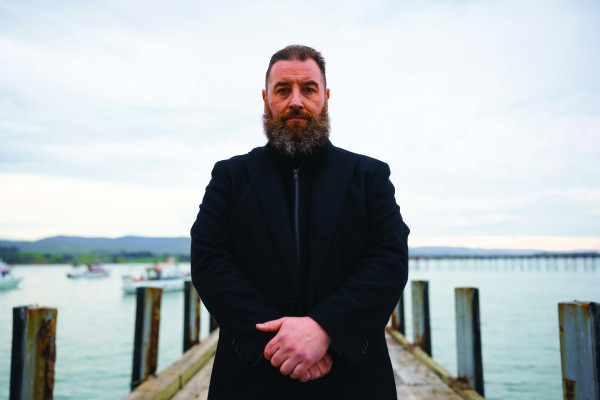
JUSTIN TIPA Kaiwhakahaere, Te Rūnanga o Ngāi Tahu
AT THE HUI-Ā-IWI IN KAIKŌURA, KAIWHAKAHAERE JUSTIN TIPA TOOK TO the stage to introduce Mō Kā Uri – Kāī Tahu 2050 to the iwi. “Mō Kā Uri is about honouring our Kāi Tahu past and building our collective Kāi Tahu future,” he said. “Over the past 25 years, we have reclaimed our land, reclaimed our culture and our language. This is about how we take it to the next level.”
When Ngāi Tahu was just a few years into its post-settlement journey, a group of iwi leaders came together to create Ngāi Tahu 2025. A tribal vision that set out the aspirations of our iwi, it was designed to be the road map that would carry us through to 2025. Ambitious by design, it was the thinking of a group of passionate whānau with a clear goal of creating a better future for the iwi.
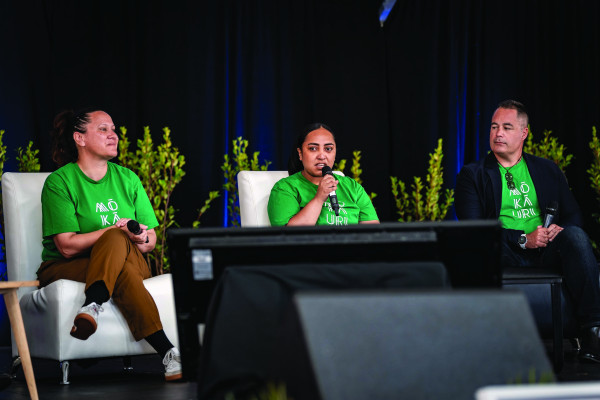
Above: Āwhina McGlinchey, Irihapeti Pitama and Eruera Tarena answer whānau questions during the Mō Kā Uri launch at Hui-ā-Iwi in Kaikōura.
As a young(ish) Kāi Tahu wahine, it's surreal to reflect on the past 25 years – more than two-thirds of my life – and realise just how many opportunities have come my way as a direct result of that vision.
My aunty, the late Sandra Cook, made sure that my brothers and I grew up with a strong connection to our Kāi Tahutaka. Her role during the Ngāi Tahu Settlement and the formative years of Te Rūnanga o Ngāi Tahu meant we had a front row seat as history unfolded, and a deep understanding of how hard she and many others fought for our future.
Aunty Sandra was the one who opened our Whai Rawa accounts as soon as the scheme was launched, and all three of us have since used our savings to buy our first homes. She encouraged me to attend Aoraki Bound, one of the most life-changing experiences I’ve ever had.
She fostered our kaitiakitaka with countless trips to Rarotoka Island, contributing to the regeneration of native habitat and taoka species.
“With what once seemed a distant horizon, now firmly upon us, we needed to look to the next 25 years to create a new story to tie us together, and a new collective intergenerational vision to take us into the future,” says Justin. “For us to have the best chance at being successful it was important to ensure that our approach was inclusive – that all whānau had the opportunity to share their dreams and aspirations in bringing to life a vision that they see themselves reflected in.
“Tokona te Raki offered us the expertise not only in their ability to engage with whānau, but in their mahi designing future pathways, and therefore were perfectly positioned to support Te Rūnanga with creating Mō Kā Uri.
And so, some two years ago, led by Eruera Tarena and Āwhina McGlinchey, a team began to design an approach that would ensure the voice and heart of whānau would be embedded in setting the collective vision.
“The tono we were given was to create an intergenerational vision for the iwi looking to 2050 and beyond,” says Āwhina McGlinchey. “Across the ages, geographic landscape and spectrum of tribal engagement we facilitated a participatory and inclusive process to engage whānau, hapū and iwi to build a shared vision.
“We talk about the iwi being inter-generational. Key to this is working across generations to build a shared understanding of where we have come from, where we are today and common agreement towards where we want to go to next, and who we want to become,” says Eruera Tarena.
“An iwi must hold all these dimensions at once, honouring the past and building our future together. This meant using different approaches to engage different generations so all uri could have their say.”
Therefore when it came to crafting Mō Kā Uri, it meant revisiting the origins of Ngāi Tahu 2025 – a process that Awhina says was surprisingly emotional. “One of the most beautiful things we heard from whānau who were around at the time, was that Ngāi Tahu 2025 was actually the first time we as an iwi gave ourselves permission to dream about the future,” she says. “So we dreamed of everything which was a necessary step in healing from everything that had gone before.”
“The genius of Ngāi Tahu 2025 was that by putting a date on it, it forces us to stop, reflect on our learnings from the past and reset for the future,” says Eruera.
Twenty-five years later, looking to what comes next provided an opportunity to refine all of those dreams into a purposeful, bold vision that reflects who we are as an iwi. It was also an opportunity to form new aspirations that would not have seemed possible in the early post-settlement years.
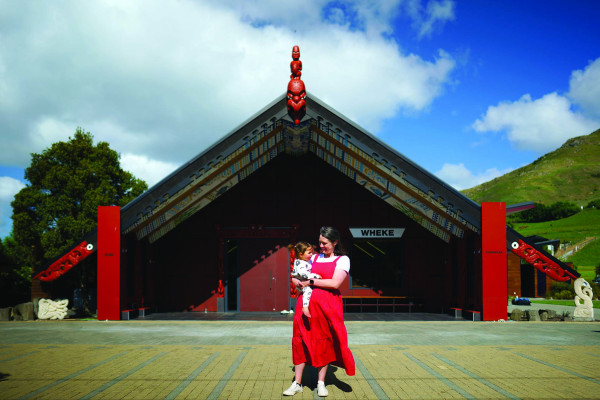
Anna Brankin with her daughter Cassie at Rāpaki Marae.
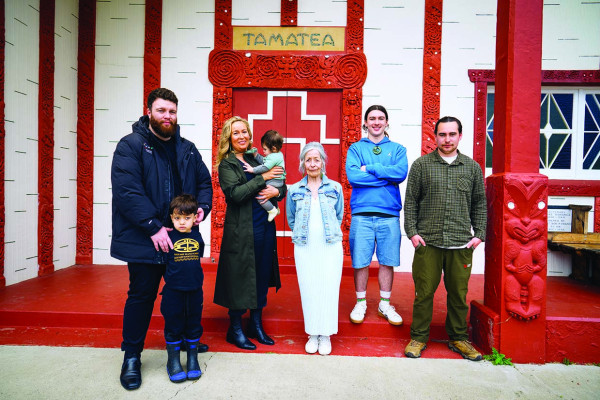
: Four generations from Ōtākou (left to right): Taikawa Tamati-Elliffe with his son, Tūtemākohu, Paulette Tamati-Elliffe with mokopuna Laafai, Rena Tamati, Te Atarau Cassidy, Tumai Cassidy.
The first step was to create a uniquely whānau-centric research approach, starting with indepth interviews with iwi leaders and knowledge holders, followed by a series of wānaka with kaumātua, pakeke and rakatahi across the takiwā and beyond. The insights captured fed into an iwi-wide survey with a key question: what is the world you want to leave behind for your mokopuna?
When I took part in this survey last year, my pēpi was just eight months old, and it was picturing her as an adult in a world where the aspirations of today have become her reality that I thought about my response. Reflecting on this now, I am struck by the power of this simple question – harnessing the hopes and dreams of hundreds of parents and grandparents to shape a vision that will guide our iwi into the future.
After conducting more than 120 interviews, holding more than 50 wānaka, and receiving more than 2,000 survey responses, the team had accumulated approximately 30,000 whānau insights. The next step was the painstaking process of identifying common themes and condensing thousands of individual dreams into a handful of collective aspirations.
“The collectively imagined future we have landed on comes from interviews, wānaka, surveys, hundreds of post-it notes and whiteboard musings,” says Āwhina.
Multiple wānaka with Te Rūnanga eventually culminated in the creation of three tiketike that form the basis of Mō Kā Uri. These were then further distilled into nine taumata, or goals, mirroring the nine tall trees of the Ngāi Tahu Settlement and the nine pou identified in Ngāi Tahu 2025.
“We wanted to include a nod to where we’ve come from as an iwi, and weave that beautiful poetry into what we do next,” says Justin.
“The success of Ngāi Tahu 2025 was its incredible articulation of our vision, and we hope that will carry through into Mō Kā Uri.
“One thing that hasn’t changed is that there’s so much work to be done. But, it can’t be delivered by a single person or organisation, and it can’t be delivered through a single pathway – each and every one of us has a role to play.”
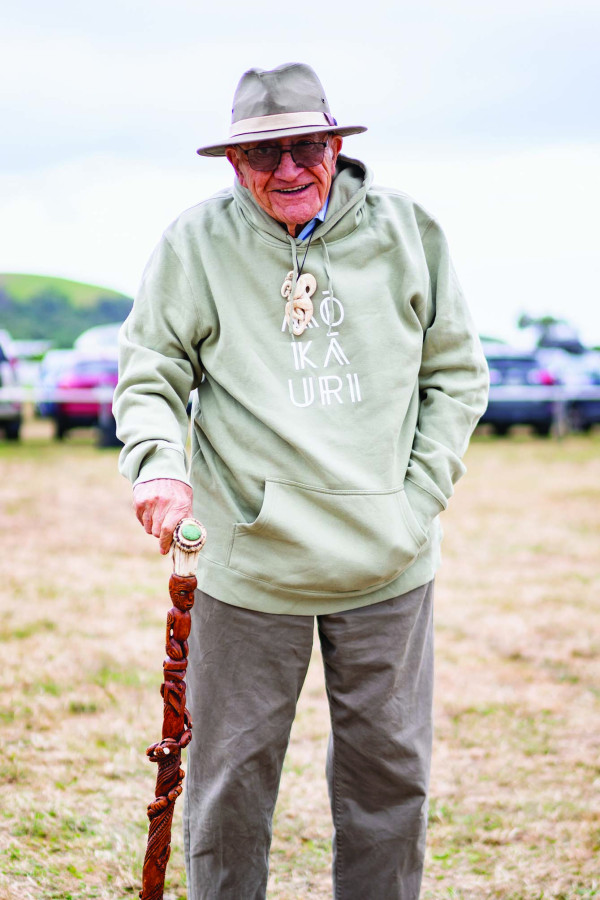
"It is inevitable that our successors will find themselves in a comparable situation to that in which we found ourselves following the historic settlements of my generation. In 2025, in 2050, in 2075 – they will find themselves in a changed and different context…
Just as we found ourselves searching for ways to transform our concept of ourselves as a tribal nation, different from that which we had inherited, so might they…
But we, in our time, have gifted them with a power of choice denied to our own ancestors."
TĀ TIPENE O’REGAN
This is why Mō Kā Uri offers a 25-year horizon but is inherently flexible, balancing a long-term vision with the need to be able to respond to change – focused on our destination but adaptable in our approach.
“One of the tensions we face is that we need to be very strategic and deliberate, but we also need to act now,” says Justin. “We can’t be leaving problems for future generations to solve, but it’s challenging when the solutions to those problems aren’t always clear.”
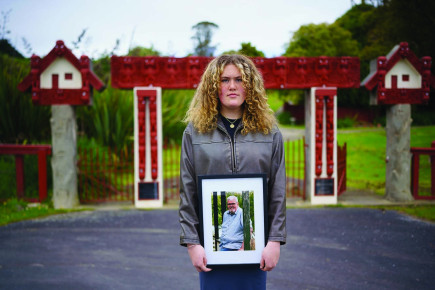
Ripeka Pōtiki with a photo of her pāpā, the late Tahu Pōtiki at Ōtākou Marae
Mō Kā Uri includes mechanisms to keep the vision alive and responsive, recommending a five-year cycle as a way to measure its impact and set a new course as needed. “The vision is fixed on that 25-year horizon, but we will approach it in chunks of time with built-in review points,” explains Justin. “That makes it a living document and gives us the opportunity to recalibrate and accept an element of fallibility that not every idea is a good one.”
The vision also represents the iwi’s recent focus on regional development, balancing the need for a strong centre to advocate for big changes with ensuring Papatipu Rūnaka are well resourced to lead change across the takiwā. That has existed since Te Rūnanga o Ngāi Tahu was established in 1996.
“One of the most fascinating things about our research was uncovering old records of whānau back in the day talking about how we needed that centralised organisation,” says Awhina. “When we didn’t have that, it was a massive barrier. And we put all of our hopes and dreams into that, and you can imagine what a radical leap it was to go from where we were, to suddenly having a professional workforce paid to do the work of the iwi and progress its aspirations, rather than volunteers.”
Eruera agrees, saying that in recent years he’s observed the iwi renaissance giving way to the revitalisation of hapū throughout the takiwā. “I think it’s a success factor that we have more capability, more energy, more passion and more resource,” he says. “Rather than these things clashing, how do we rebalance and reallocate resources so we can leverage the strength of our regions, while also acknowledging we are stronger together.”
Mō Kā Uri is more than a vision; it is an act of reclamation. It asserts the right for the iwi to define its future, free from the constraints of external narratives. “We don’t just follow the trends and do what everyone else is doing, following the carrot that the Crown is dangling for us,” says Justin. “Mō Kā Uri is about being relevant, authentic and creative in the spaces and places that allow our people to engage in a safe and meaningful way.”
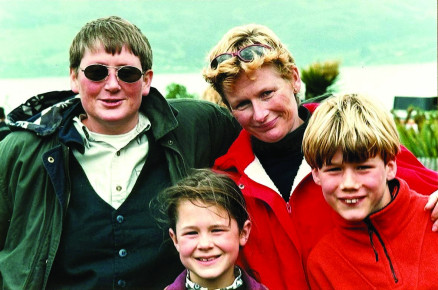
The late Sandra Cook with nephews Christopher (rear) and Michael and niece Anna.
Rebuilding kotahitaka and a renewed shared sense of purpose is central to this. “We need to be strong together to protect our interests and carve out our future. Just like the Claim we need to work together and support each other – Tōtara wāhi rua, he kai nā te ahi,” says Charisma Rangipunga, Wairewa Te Rūnanga Representative and Te Here Chair who has played an instrumental role in bringing Mō Kā Uri to life.
The vision captured in Mō Kā Uri is another thread connecting us to the aspirations laid out in Ngāi Tahu 2025, and before that, to the dreams of generations of Kāi Tahu who began the work that we continue today: building a bright future for us and our children after us.
My two-year-old daughter Cassie didn’t get to meet her great-aunt, but she will benefit from her legacy. Aunty Sandra was part of a passionate and resolute generation of Kāi Tahu whānau who dreamed of a better future for our mokopuna, and Ngāi Tahu 2025 was the first step in realising that dream.
| Mō Kā Uri – Kāi Tahu 2050 Tūturu te noho: Our mana motuhake comes from our places 1. Our papatipu marae and their communities are vibrant in all ways and full of aspiration 2. Our tīpuna guide our approach and connection to our taiao, mahika kai, and takiwā 3. We strongly uphold the mana and mauri of our whenua, wai and taoka Tūturu te hono: Our kotahitaka comes from our whakapapa 4. Our ways of thinking, feeling, doing and being are Kāi Tahu and celebrated 5. We ensure the protection, preservation and integrity of our whakapapa, reo and mātauraka tuku iho 6. We make this knowledge accessible in innovative ways to whānau wherever they live Tūturu ake nei: Our rakatirataka protects the past and shapes the future 7. Our iwi is deliberate in using our collective influence to advance our shared aspirations and collective wellbeing 8. We draw upon the strengths of each generation, whilst actively investing in succession for the future 9. We plan, invest and act intergenerationally |